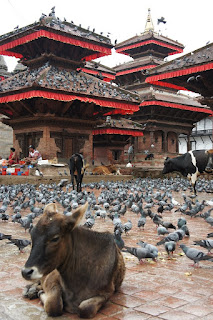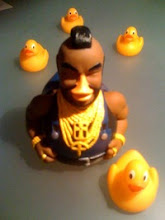Driving into Lhasa, it doesn’t actually feel very Tibetan. You have the same large thoroughfares evident in all Chinese cities, industrial estates belching out fumes and producing god-knows-what and huge Chinese slogans printed everywhere.
It was only once we reached the heart of the city, got off the bus and walked the final 100m to our hotel that we could see how it was (and might still have been). We still had a couple of days of sightseeing ahead of us, which would take us to the Jokhang Temple, the Potala Palace and a couple of other not so well known places in and around the city.
I felt somewhat guilty that we were going into the Potala Palace, as it is essentially the spiritual home of the Dalai Lama, and should theoretically be closed to all but his family and Tibetan government officials. I think he would feel very unwelcome in its current guise, with all trace of him perfectly cleansed away. You see his bedroom and study, but no single mention of him. There are some amazing sights held within though, mainly ornate bejewelled stupas of all the previous Dalai Lamas.
And directly in front of it (standing on a hill all alone, it looks pretty impressive) there is a typically Chinese large square (with large plaque celebrating the achievement of building it), with a multi-coloured dancing water fountain in it, blaring out classical music mixed with Canto-pop. We were fascinated by its tackiness. (I have a similar video, but couldn't upload it):
Only an oppressive regime could manage such things.
 |
| Where's Wally? Can you find him? |
The local Tibetans spent a lot of time praying in the main square before the Jokhang temple, which dates from the 7th century, and is the holiest place in the country (whoops, slip of the tongue, I meant province). Some pilgrims have walked for huge distances to be here. That’s not that unusual in the religious world, but every couple of steps on the way they prostrate themselves.
 |
| Just 3,418,882 more to go |
The locals were friendly as we made our way around the town (both Han and Tibetan). We had been warned by a Han in Qingdao that the Tibetans were not good people, and will always try and rip you off, but that’s one of those situations where people have a blinkered view when there is a clash of cultures. Tibetans probably think similarly of the Han.
 |
| Not a good idea |
The army presence was immense; I haven’t seen so many soldiers stationed on the streets since Northern Ireland in the 80s. It’s somewhat menacing, with all of them carrying guns. No wonder the Tibetans seen rather downtrodden, with that and the constant flux of immigrants from other parts of China.
I also had a sweetcorn flavoured ice-cream, it was awful, and I couldn't finish it. The local beer was surprisingly decent, simply called Lhasa (I'm still waiting for a beer to be called Swatragh). Even though it was as light as the usual Chinese beer, the taste was crisp and a little sweet. The other thing about Chinese beer that I noticed was that it is reasonably drinkable when it'snot chilled. It still tastes the same (watery).
And finally we had got to a place where men did not use their T-shirts as belly tops (although that was probably more to do with it being a bit nippy). Ever since Ulan Bataar, we’d seen this constantly, through China, SE Asia and Nepal.




















































